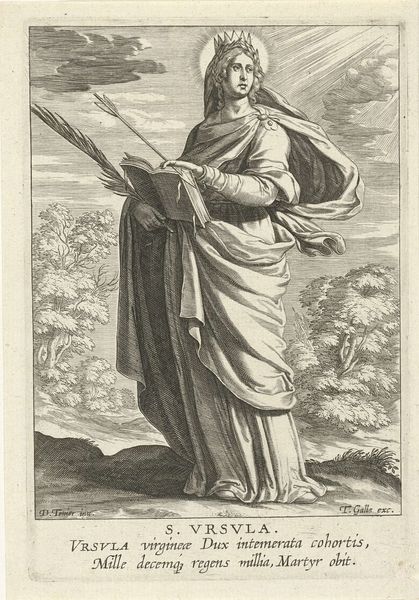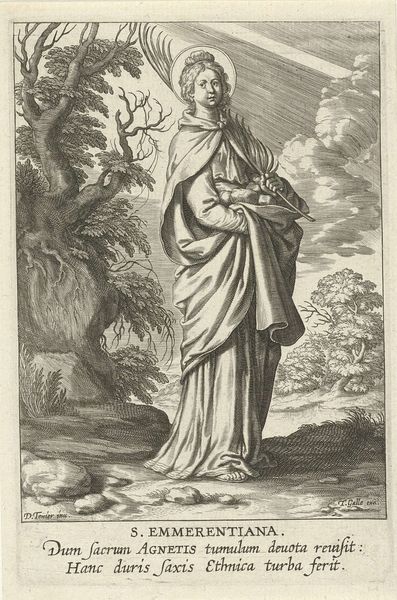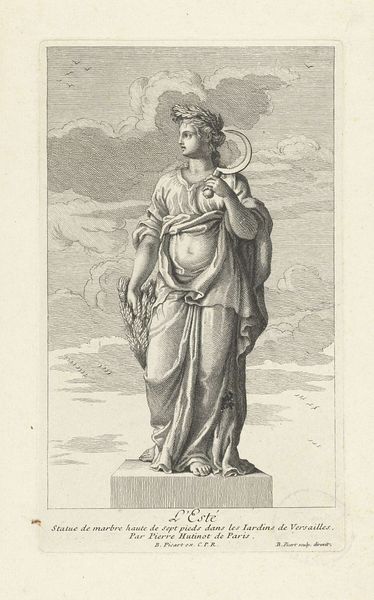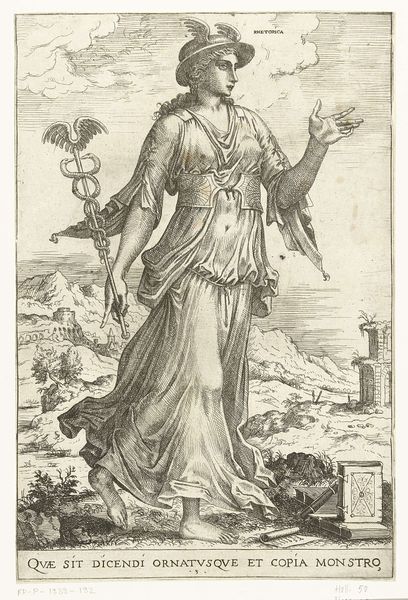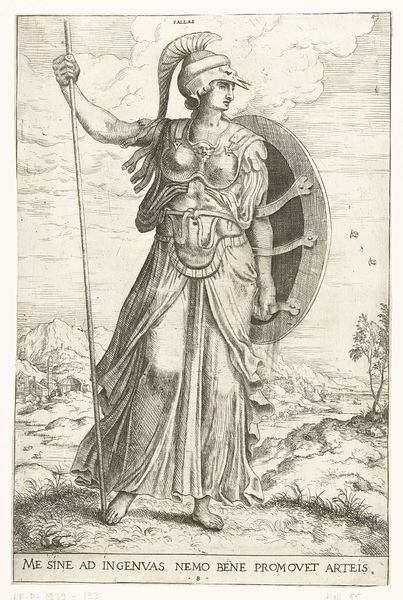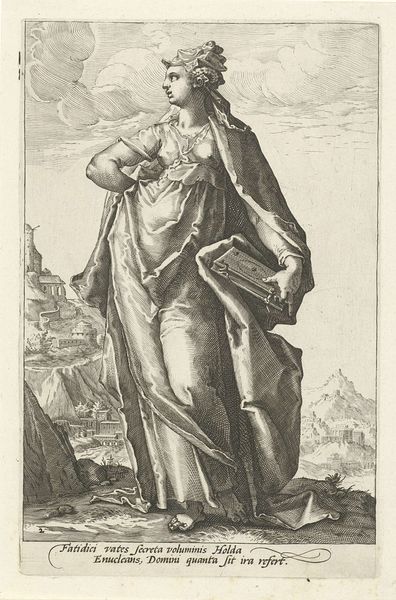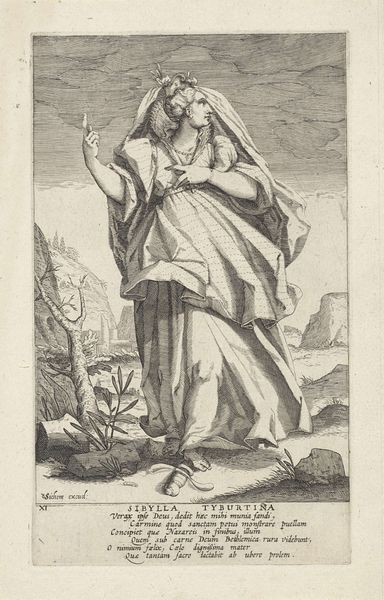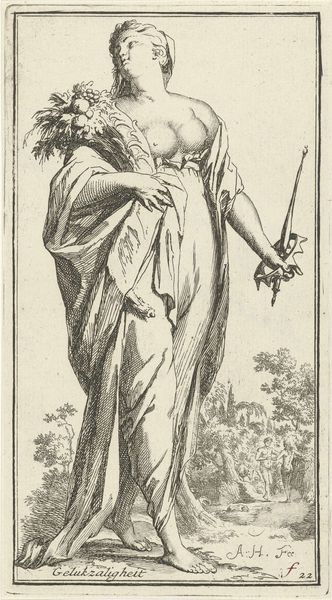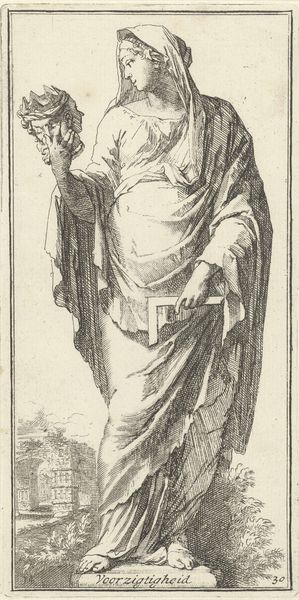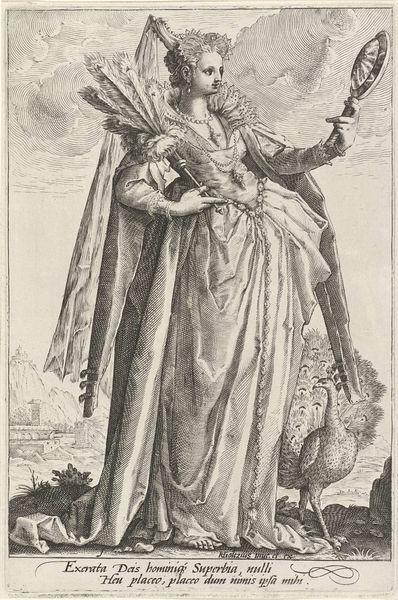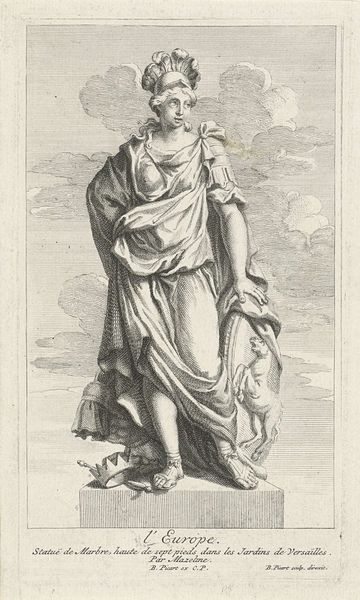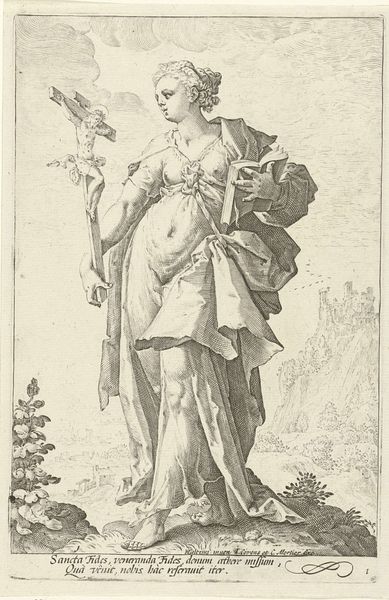
print, engraving
#
allegory
# print
#
figuration
#
11_renaissance
#
line
#
history-painting
#
northern-renaissance
#
engraving
Dimensions: height 300 mm, width 202 mm
Copyright: Rijks Museum: Open Domain
Hieronymus Cock's "Geometria," created around the mid-16th century, presents us with an allegorical figure embodying geometry, surrounded by its tools: a compass, a ruler, and set squares. These objects transcend mere utility; they symbolize the rational ordering of the world, a concept deeply rooted in classical thought. Note how the compass in Geometria's hand mirrors the pose in Raphael’s "School of Athens," where geometry is also portrayed through instruments of measurement. Yet, the gesture of measurement appears elsewhere too. Consider the rod in the hand of ancient Egyptian surveyors, depicted in tomb paintings; the same motif conveys the power to measure and define space. This act embodies humanity's eternal quest to understand and control our environment. The emotional resonance is clear: the desire to measure is a potent psychological drive. We find echoes of this sentiment across cultures, reflecting a fundamental aspect of human cognition. Through such symbols, we perceive the enduring power of images to bind us to our past, revealing the cyclical nature of human inquiry.
Comments
No comments
Be the first to comment and join the conversation on the ultimate creative platform.
